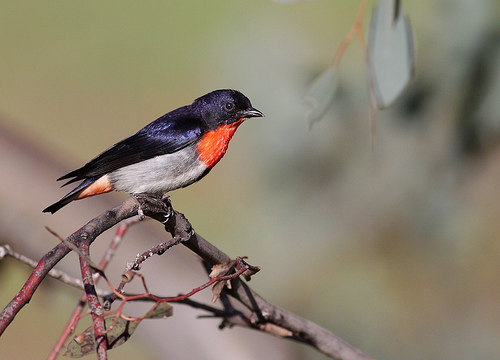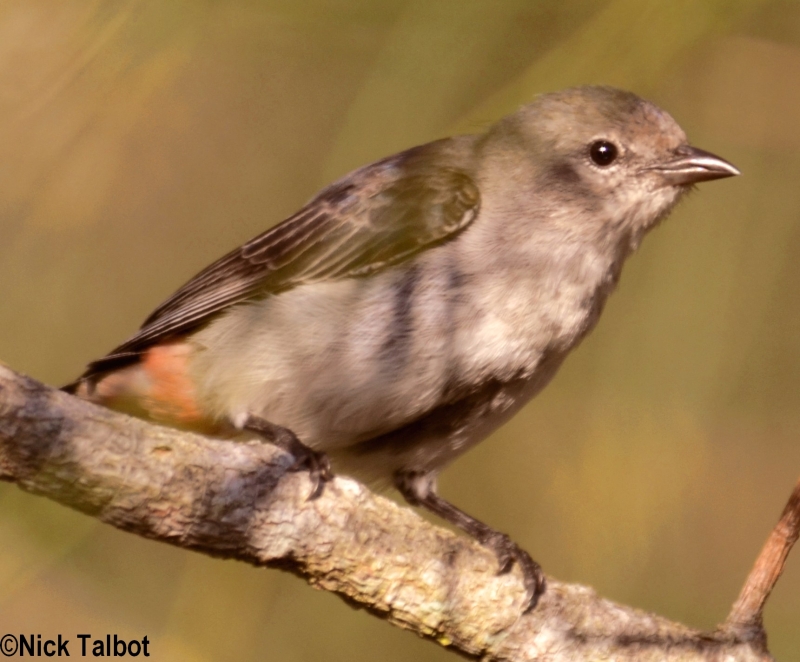
©David Cook: Immature male Mistletoebird (Dicaeum (Dicaeum) hirundinaceum) with Mistletoe berry in its beak.
Colours
Distinguishing features
The male is glossy blue-black above, with a red chest and a slight red undertail, and a black centre stripe running down its white belly. The female is dark grey above, with a white throat, light grey underparts, and just a touch of pinkish-red under the tail. The eyes, bill and legs are black; the bill is just over a centimetre long, slender, slightly downcurved and sharply pointed. Immature birds are similar to the female, but have an orange-pink bill instead of black.
There are four subspecies, which differ in plumage details, primarily of the males. (Wikipedia)
Size
- From 10 cm to 11 cm (Length of specimen)
Wingspan
- Wingspan data is not yet available.
Synonyms
Distribution

©Atlas of Living Australia: Australian distribution: Mistletoebird (Dicaeum (Dicaeum) hirundinaceum)
Distribution and habitat preferences
native to most of Australia (though absent from Tasmania and the driest desert areas), and also to the eastern Maluku Islands of Indonesia in the Arafura Sea between Australia and New Guinea. They also must live where there are trees and shrubs, so that they can build their nests. (Wikipedia)
Audio recordings
Diet
It eats a variety of different foods. It commonly eats the berries of mistletoes (hence the name) and other plants. The diet also includes nectar, pollen, spiders, and insects.
The species consumes the fruit of Grey Mistletoe (Amyema quandang) and other mistletoe species. By eating the mistletoe, this bird is able to spread the seeds, which is a parasitic plant. When the birds eat the berries, the seeds pass through them, which takes anywhere from 4–25 minutes. Then when they excrete the seeds, they are sticky and stick to the branch of a tree and sprout.(Wikipedia)


